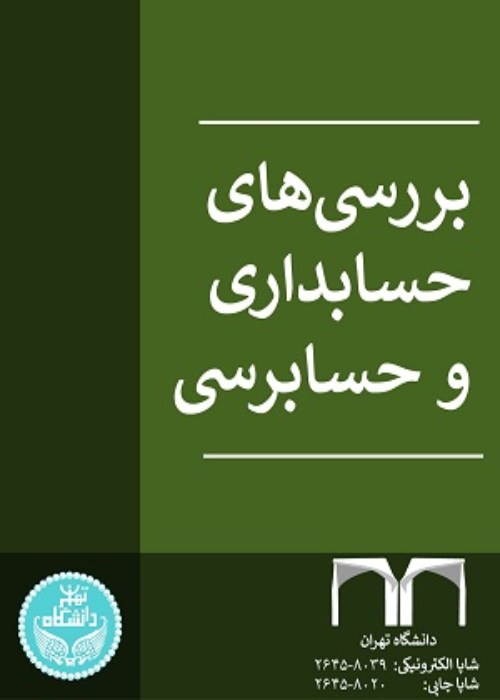Investigation the Effective Contingent Constructs of Implementation of the PFABC Costing System: The Gap between Theory and Practice
Costing systems are among the foundations that have gained prominence in the new world of cost management. The purpose of this study is, by innovation and contingent theories, to investigate 1. What constructs should be selected for successful implementation of costing systems? 2. Why there is a gap between theory and practice in these systems? In this regard, the influence oforganizational, technological, environmental, costs and other factors relating to the PFABC system, as the most contemporary ABC system, were investigated.
This research adopts the quantitative approach and survey method. First, by library research approach and utilizing the literature of innovation and expectancy theories, a conceptual model was developed. Second, by adopting content analysis, the major imputing constructs of the framework were identified and tested. A five scale Likert type of questionnaire was employed to collect necessary data. The validity and reliability of the questionnaire was tested by the face validity and Crohnbach's alpha, respectively. The statistical population consists of all the Tehran Stock Exchange (TSE) companies. In 2018, 450 questionnaires were sent to (TSE) corporate executives and 262 usable responses were collected. Structural Modeling equations, SPSS and SMARTPLS softwares were used to analyze the results.
By introducing a comprehensive framework, the results showed that all constructs relating to organizational (management's support, employee's support, education, type of the industry, organization's size, and tendency of management towards risk), technology, (product variety, product complexity, and volume of the overhead) environment (type of the organization's strategy, competition, role of the government, and culture) cost factors (implementation costs and maintenance costs of the system), and other construct (cost saving, integration of the system, and timing of the system implementation) had a positive and significant effect on the implementation of the PFABC costing system. The environmental factors with the coefficient of (0.997) had the greatest impact, followed by cost factors (0.996), technology factors (0.993) and organizational factors (0.981) respectively. However, there was no meaningful relationship between the constructs related of other factors (desire to save, system integration and time of system implementation) and implementation of the PFABC costing system.
The most important constructs that influence the successful implementation of a costing system are relating to organizational, technological, environmental and cost factors. These are also the major factors responsible for the existence of a gap between theory and practice. The application of ABC, TDABC, and PFABC among TSE firms, was 6.1%, 0.04% and 0% accordingly, hence, there is a huge gap between theory and practice.
- حق عضویت دریافتی صرف حمایت از نشریات عضو و نگهداری، تکمیل و توسعه مگیران میشود.
- پرداخت حق اشتراک و دانلود مقالات اجازه بازنشر آن در سایر رسانههای چاپی و دیجیتال را به کاربر نمیدهد.



